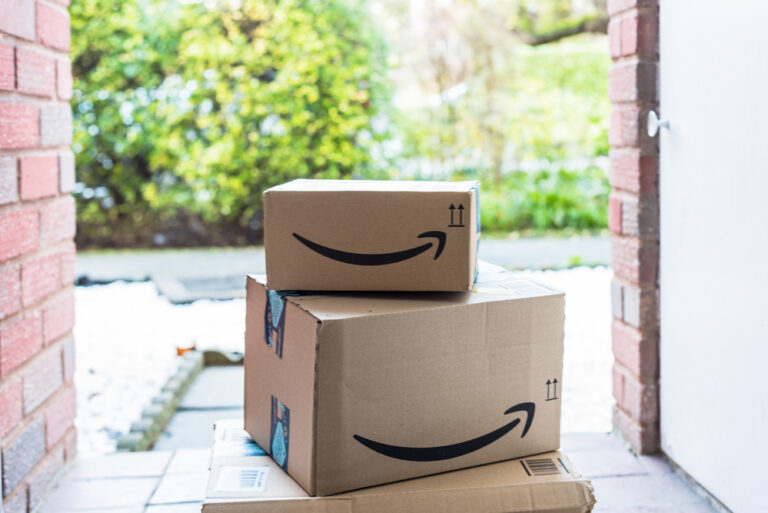Mobile Ecommerce Statistics 2024 (Latest Mcommerce Data)

Mobile shopping is fast, convenient, and driven by smartphone adaption.
Mobile commerce statistics suggest the majority of Americans prefer to connect with and buy from businesses through mobile devices.
Mobile Commerce Statistics
- The U.S. mobile commerce market is estimated to reach $616.3 billion by 2025.
- Mobile makes up 59.9% of global ecommerce sales and 70.9% of all internet traffic.
- Average consumer spends 4.4 hours per day on mobile, 88% in apps.
- 76% of Americans report buying things online using a smartphone.
- Nearly 1 in 3 consumers in the U.S. prefer to pay for everything with a smartphone.
- 60% of businesses use mobile commerce to connect and sell to customers.
- Average mobile conversion rate is 2%, abandoned cart rate 84%, and AOV $112.29.
- 88% of consumers use mobile shopping apps, 52% use them weekly.
- Biggest shopping app problems are lack of product info (35%) and clunky user interface (23%).
1. The U.S. mobile commerce market is estimated to reach $616.3 billion by 2025.
According to recently updated Insider Intelligence mobile commerce growth statistics (2023), the U.S. mobile commerce market is estimated to reach $616.3 billion by 2025. (1, 2)
Mobile commerce is expected to make up 44.2% of U.S. ecommerce sales by 2025. (3)
| U.S. Mcommerce | 2022 | 2023 | 2024 | 2025 |
| Retail Mcommerce Sales | $415.9 B | $477.5 B | $534.2 B | $616.3 B |
| % of Retail Ecommerce Sales | 40.5% | 41.6% | 42.9% | 44.2% |
| % of Retail Sales | 6.0% | 6.5% | 7.2% | 7.9% |
The U.S. mobile commmerce market revenue in 2023 is expected to reach $477.5 billion and account for 41.6% of total ecommerce sales.
The U.S. mobile commerce market is expected to account for 6.5% of the total retail market in 2023 and 7.9% by 2025.
2. Mobile makes up 59.9% of global ecommerce sales and 70.9% of all internet traffic.
According to IRP Commerce mobile ecommerce statistics (2022), mobile makes up 59.9% of global ecommerce sales and 70.9% of all internet traffic worldwide. (4)
| Global Ecommerce | Mobile | Tablet | Computer |
| Traffic | 70.9% | 2.0% | 27.1% |
| Revenue | 59.9% | 2.6% | 37.5% |
Tablets make up only 2.6% of global ecommerce sales and 2% of all internet traffic worldwide.
Computers make up 37.5% of global ecommerce sales and 27.1% of all internet traffic worldwide.
| Rank | Ecommerce Traffic Sources | Global Percentage |
| #1 | Paid search | 50.5% |
| #2 | Direct | 29.0% |
| #3 | Email marketing | 10.6% |
| #4 | Affiliate marketing | 8.8% |
| #5 | Paid social media | 1.1% |
According to IRP Commerce mcommerce data (2022), about 50.5% of global ecommerce traffic is driven through paid search channels.
About 29% of global ecommerce data is based on direct traffic, 10.6% comes from email marketing, and 8.8% is through affiliate marketing.
3. Average consumer spends 4.4 hours per day on mobile, 88% in apps.
According to Data AI statistics on mobile commerce (2023), the average U.S. consumer spends 4.4 hours per day on mobile and 88% of that time in apps. (5, 6)
| Time on Mobile Per user | Time in Apps Per user | Shopping Apps In 2022 | Smartphone Users |
| 4.4 hours per day | 88% per day | 2.8 B hours total | 85% of consumers |
The mobile buyer’s research also found that U.S. consumers spent 2.8 billion hours total in shopping apps in 2022.
According to Pew Research Center data, about 85% of U.S. adults own smartphones and 53% own tablets. (7)
This means 85% of American consumers own a smartphone, where they spend 4.4 hours per day by using apps 88% of the time.
4. 76% of Americans report buying things online using a smartphone.
According to Pew Research Center mcommerce statistics (2022), 76% of Americans (197 million) report buying things online using a smartphone. (8)
About 4 in 10 Americans (39%) shop online with a mobile device at least weekly or more.
| Online Shopping | Smartphone | Computer | Tablet |
| Ownership | 85% | 77% | 53% |
| Ever bought | 76% | 69% | 28% |
| At least weekly | 32% | 21% | 7% |
About 76% of American adults (197 million) report ever buying things online using a smartphone, 69% (179 million) using a computer, and 28% (73 million) using a tablet. (9)
About 32% of American adults (83 million) shop regularly online using a smartphone, 21% (54 million) using a computer, and 7% (18 million) using a tablet.
The mobile shopping data suggests that 85% of Americans own a smartphone, 76% have ever made a mobile purchase, and 32% shop regularly on mobile.
5. Nearly 1 in 3 consumers in the U.S. prefer to pay for everything with a smartphone.
According to Statista mobile shopping statistics (2022), nearly 1 in 3 consumers (30%) in the U.S. prefer to pay for everything with a smartphone. (10)
| Pay With a Smartphone | Percentages |
| For everything | 30% |
| Don’t want to pay with a smartphone | 27% |
| For food and drinks in restaurants | 16% |
| For everyday purchases (e.g. food) | 14% |
| For food and drinks in bars and cafes | 13% |
| For minor purchases (decoration items) | 11% |
| For public transportation tickets | 10% |
| For travel booking | 9% |
| Don’t know | 9% |
| For major purchases (e.g. washing machine) | 7% |
| Other | 2% |
*Percentages do not add up to 100, as multiple answers were possible.
About 29% of Americans prefer to use a smartphone to pay for food and drinks, 14% for everyday purchases, and 11% for minor purchases.
Interestingly about 7% of consumers prefer to use a smartphone when buying major purchases like washing machines.
6. 60% of businesses use mobile commerce to connect and sell to customers.
According to Square statistics on mobile ecommerce (2022), about 60% of businesses in the U.S. use mobile commerce experience to connect and sell to customers. (11)
| Use Mcommerce | Planning Mcommerce | Want Mcommerce |
| 60% of businesses | 20% of businesses | 98% of consumers |
About 20% of American businesses are planning to develop mobile commerce experience in the future.
The mcommerce data also found that 98% of consumers want to connect with businesses through their mobile devices.
| Reported Benefits | % of Businesses |
| Better able to manage customer relationships | 53% |
| Saved time by automating their business | 53% |
| Increased sales from new customers | 52% |
| Increased customer satisfaction | 48% |
| Increased sales from existing customers | 47% |
| Increased customer loyalty | 44% |
And the mobile commerce experience works.
According to Square, an overwhelming 97% of businesses that have already started creating a mobile commerce experience report noticeable benefits.
About 53% of U.S. businesses using mcommerce are better able to manage customer relationships and save more time by automation.
About 52% of U.S. businesses using mcommerce, see an increase in new customer sales, 48% increase in customer satisfaction, 47% in existing customer sales, and 44% in customer loyalty.
7. Average mobile conversion rate is 2%, abandoned cart rate 84%, and AOV $112.29.
According to Kibo Commerce statistics about mobile commerce (2022), the average U.S. mcommerce conversion rate is 2%, the abandoned cart rate 84%, and the average order value $112.29. (12)
| U.S. Mcommerce | Mobile | Tablet | Computer |
| Add-to-cart rate | 11% | 11% | 11% |
| Abandoned cart rate | 84% | 75% | 72% |
| Conversion rate | 2% | 3% | 3% |
| Average order value | $112.29 | $95.51 | $155.75 |
The average U.S. mobile commerce add-to-cart rate is 11%, for tablets 11%, and for computers also 11%.
The average U.S. tablet commerce conversion rate is 3%, the abandoned cart rate 75%, and the average order value $95.51.
The average U.S. computer ecommerce conversion rate is 3%, the abandoned cart rate 75%, and the average order value $95.51.
| Mobile Shopping Apps | Percentage |
| Install to action rate | 18.5% |
| Day 7 retention rate | 9.5% |
| Cost-per-install | $2.34 |
| Cost-per-action | $12.64 |
According to Liftoff mobile ecommerce data (2022), the average mobile shopping app conversion rate (install to action) is 18.5% and day 7 retention rate 9.5%. (13)
The average mobile shopping app cost-per-install is $2.34 and the cost-per-action is $12.64.
8. 88% of consumers use mobile shopping apps, 52% use them weekly.
According to NewStore ecommerce mobile app statistics (2022), about 88% of U.S. consumers use mobile shopping apps, 52% use them weekly. (14)
| At Least One Shopping App | More Than Four Shopping Apps | More Than Ten Shopping Apps |
| 88% of consumers | 44% of consumers | 9% of consumers |
Also, 44% of consumers use more than 4 shopping apps and 9% more than 10 shopping apps.
The shopping apps research found that consumers with mobile shopping apps installed are using them frequently.
| Frequency | All Users | <4 Apps | >4 Apps |
| Daily | 15% | 6% | 21% |
| A few times a week | 37% | 29% | 43% |
| A few times a month | 26% | 30% | 24% |
| About once a month | 12% | 18% | 8% |
| Less than once a month | 9% | 16% | 3% |
| Never | 1% | 1% | 1% |
Overall, 15% of American consumers use shopping apps daily, 37% use them a few times a week, and 26% a few times a month.
What was also interesting was that the more shopping apps consumer have, the more they use them.
About 43% of consumers who have more than 4 shopping apps installed reported shopping a few times a week, compared to 29% with less than 4 apps.
9. Biggest shopping app problems are lack of product info (35%) and clunky user interface (23%).
According to Heady mcommerce mobile app statistics, the biggest shopping app problems for users are lack of product info (35%), clunky user interface (23%), and hard-to-browse products (23%). (15)
| Rank | Shopping App Problems | Percentage |
| #1 | Not enough product information | 35% |
| #2 | Clunky user interface | 23% |
| #3 | Hard to find and browse products | 23% |
| #4 | App doesn’t save data from past session | 22% |
| #5 | Slow to complete the task at hand | 19% |
| #6 | Worse prices/promotions compared to other channels | 17% |
| #7 | Buttons are too small or hard to click | 14% |
| #8 | Don’t trust mobile app to complete purchase | 13% |
| #9 | Too many clicks to purchase | 12% |
The mcommerce app research also found, that poor organization is the #1 for a negative review (44%), followed by apps where data doesn’t save between sessions (35%).
Common reasons for deleting a shopping app were too many clicks to purchase, poor search functionality, and poor filtering options.
Sources
- Insider Intelligence. 2023. Rise of Mcommerce: Mobile Ecommerce Shopping Stats & Trends in 2023. Link
- Insider Intelligence. 2023. Retail sales rise 6.0% in December, as consumers pulled back on spending. Link
- Insider Intelligence. 2022. Ecommerce shoppers are moving to mobile. Link
- IRP Commerce. 2023. Ecommerce Market Data and Ecommerce Benchmarks. Link
- Data AI. 2023. State of Mobile 2023. Link
- Insider Intelligence. 2020. The Majority of Americans’ Mobile Time Spent Takes Place in Apps. Link
- Pew Research Center. 2021. Mobile Fact Sheet. Link
- Pew Research Center. 2022. For shopping, phones are common and influencers have become a factor – especially for young adults. Link
- U.S. Census Bureau. 2023. QuickFacts United States. Link
- Statista. 2022. Mobile payments by situation in the U.S. in 2022. Link
- Square. 2022. Growth of Mobile and Conversational Commerce Report. Link
- Kibo Commerce. 2022. Quarterly Ecommerce Benchmarks Report. Link
- Liftoff. 2022. Mobile Shopping Apps Report. Link
- Newstore. 2022. Survey: 1 in 3 U.S. Consumers Prefer Mobile Shopping Apps to All Other Channels. Link
- Heady. 2021. New Data Shows 57% of Shoppers Prefer Mobile Apps to Other Channels. Link
FAQ
What percentage of online shopping is on mobile ecommerce?
Mobile shoppers make up 59.9% of global e-commerce sales and 70.9% of all internet traffic.
What are the most popular mobile payment services?
The most popular services include Amazon Pay, Google Pay, and Cash App.
How many mobile shoppers use Google Pay, Amazon Pay, and Shopify Pay?
Market trends suggest that Google Pay has about 150 million users, Amazon Pay has about 50 million users, and Shopify Pay is used on 1.5 million websites.
What do mcommerce statistics say about the industry growth?
The U.S. mobile commerce market is estimated to reach $616.3 billion by 2025. The U.S. online store market revenue in 2023 is expected to reach $477.5 billion.





